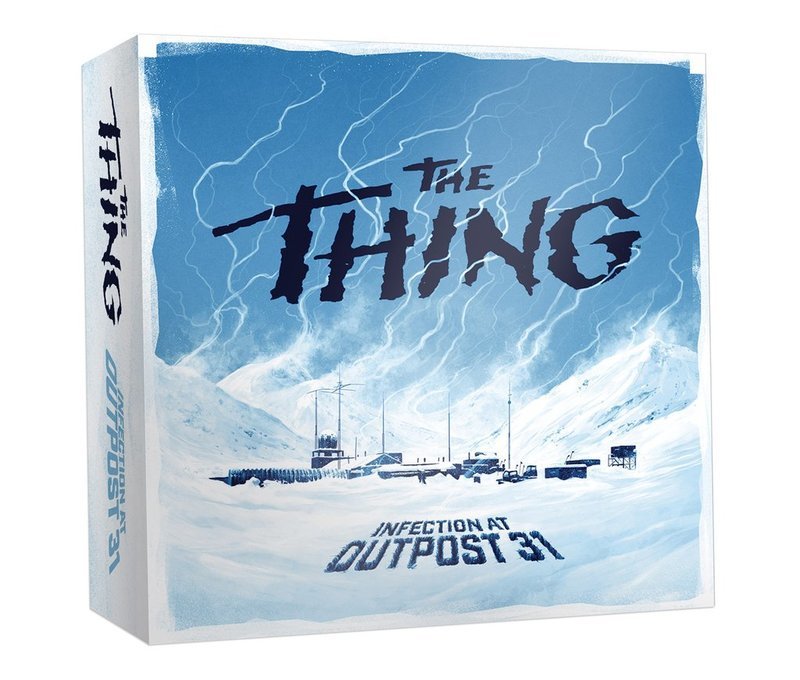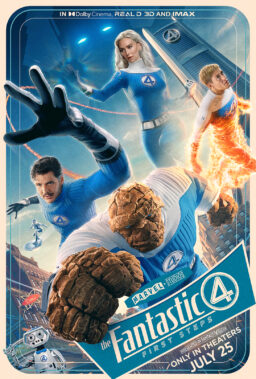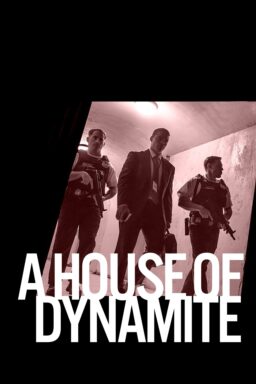In the span of only a few days, I received Mondo’s first board game, a clever riff on John Carpenter’s “The Thing” called Infection at Outpost 31, saw a Facebook ad for a screening of the 35-year-old film hosted by the Chicago Film Critics Association, and read about a new Arrow Blu-ray release of the film coming in November. It got me thinking, how many films this old get board games, have theatrical screenings, and get new HD restorations at the same time. “The Thing” is arguably more popular than it’s ever been. Why? What is it about this film that has allowed it to sustain while so many others have come and gone? How does a movie that opened in eighth place (just ahead of “Megaforce” and six spots behind “Blade Runner,” which opened on the same day) still have such power 35 years later? And when I opened question up on Twitter, I was blown away by the variety of responses. There isn’t just one reason that people still love “The Thing” enough to turn it into an industry of its own—there are dozens, and every one of them as valid as the others.
“The Thing” starts with two elements that will define it—confusion and cold. You can feel the wind circling the camp like the helicopter of Norwegians trying to kill a fleeing dog. What the hell is going on here? The characters are introduced in a state of confusion, surrounded by snow-covered everything, and that confusion will only increase as the true horror of their situation becomes further defined. “The Thing” starts as pure, alien invasion horror—is there anything from that era more disturbing than the dog/alien hybrid, a prime example of one of the film’s greatest gifts: stunning practical effects? It’s a Lovecraftian vision of body horror, part dog and part something out of your worst nightmare.
And from that brutal scene, “The Thing” develops perhaps its greatest lasting strength as a story of paranoia. The crew soon realizes that their invader can take on the appearance of anyone at the camp. Some of the greatest horror cinema of all time has been built on a foundation of distrust. George A. Romero mined this vein of terror in nearly all of his films, but the thematic undercurrent of an enemy that looks exactly like your friend has arguably never been more well-mined for horror as it is in “The Thing.” As generations hand this film down, that’s an element that will never grow old—we will always have distrust in the other, and fear of betrayal of both those we know and our own bodies. And what do we do with that knowledge? What we do when we see that there’s a 75% chance someone is invaded and not who we think they are? The relatability of that situation defines the slow, burning horror of what might be John Carpenter’s best film.

Of course, Mondo’s game uses distrust as its main template as well. Four to eight players embark on a mission to stop the alien invasion at Outpost 31, but one of them starts as an “Imitation,” with the potential for other “Humans” to be infected as the game progresses. It’s a board game designed around subterfuge, as the “Imitation” tries to halt the success of other players without giving away that he or she is doing so. It’s a game that’s played on multiple levels. The instructions even say, “While playing The Thing: Infection at Outpost 31, talking about the current situation is expected. Players share information (which may or may not be true) and the Captain solicits volunteers to handle specific tasks. Chatter makes the game—don’t be shy, be sly.” This is such a brilliant way to capture why people still love “The Thing” in another property. A team of less-ambitious designers could have made a pure action-based board game in which humans fight an alien thing, but the team behind this game understand that “The Thing” is about way more than action. It’s a very complicated game, but it’s one that trusts the intelligence of the film’s fan base and their desire to have a tie-in that respects the complexity and the brilliance of its source material.

So why do people still love this movie enough to support a board game in 2017? Here are few choice Twitter responses. Go pick up the game if you still can (it was a limited run by Mondo, as they do with most of their properties) and pre-order the Arrow Blu-ray. You should also take time to read this excellent oral history of the film by our very-own Simon Abrams and Matt Zoller Seitz for The Village Voice.
Also, the characters are perfectly drawn/acted. It’s the most perfect object in Carpenter’s catalog. The snow a reminder of our mortality
— Scout Tafoya (@Honors_Zombie) October” class=”redactor-linkify-object”>https://twitter.com/Honors_Zom… 27, 2017
Rob Bottin f/x, the scene with Wilfred Brimley in the shed with a noose behind him, Morricone, cold you can feel in your bones, MACREADY and his beard. One of the great collections of ‘that guy’ character actors.
— chris nashawaty (@ChrisNashawaty) October” class=”redactor-linkify-object”>https://twitter.com/ChrisNasha… 27, 2017
Expansive enough that the threat could metaphorically mean anything & perfectly taps into the horror of sthing wrong disrupting your safety
— WILLOW HATELYN (@willow_catelyn) October” class=”redactor-linkify-object”>https://twitter.com/willow_cat… 27, 2017
The lingering uncertainty of what the “thing” actually is. A winter setting that evokes a lack of warmth. Characters who are actually smart.
— Brendan Cassidy (@BrendanJCassidy) October” class=”redactor-linkify-object”>https://twitter.com/BrendanJCa… 26, 2017
You feel like you are actually out there on the cold, desolate & unnervingly quiet outpost w/ the crew. Every single time.
— Josh Boren (@4starblog) October” class=”redactor-linkify-object”>https://twitter.com/4starblog/… 27, 2017
Best practical effects of all time. They make my jaw drop each time. The dread, the music, the cold. It’s a perfect film.
— AndyMuschiettiElijah (@andrewmelijah) October” class=”redactor-linkify-object”>https://twitter.com/andrewmeli… 26, 2017
It never stops being frightening, no matter how many times you see it. Its power never dilutes. Incredibly rare for thriller/horror.
— Daniel S. Pumpkins (@danielwcarlson) October” class=”redactor-linkify-object”>https://twitter.com/danielwcar… 26, 2017
The cast, The practical FX, Morricone’s Score the bleak tone & 1 of the truly Great ambiguous endings of all time.
— David Fanton (@dfbridgeburner) October” class=”redactor-linkify-object”>https://twitter.com/dfbridgebu… 26, 2017












